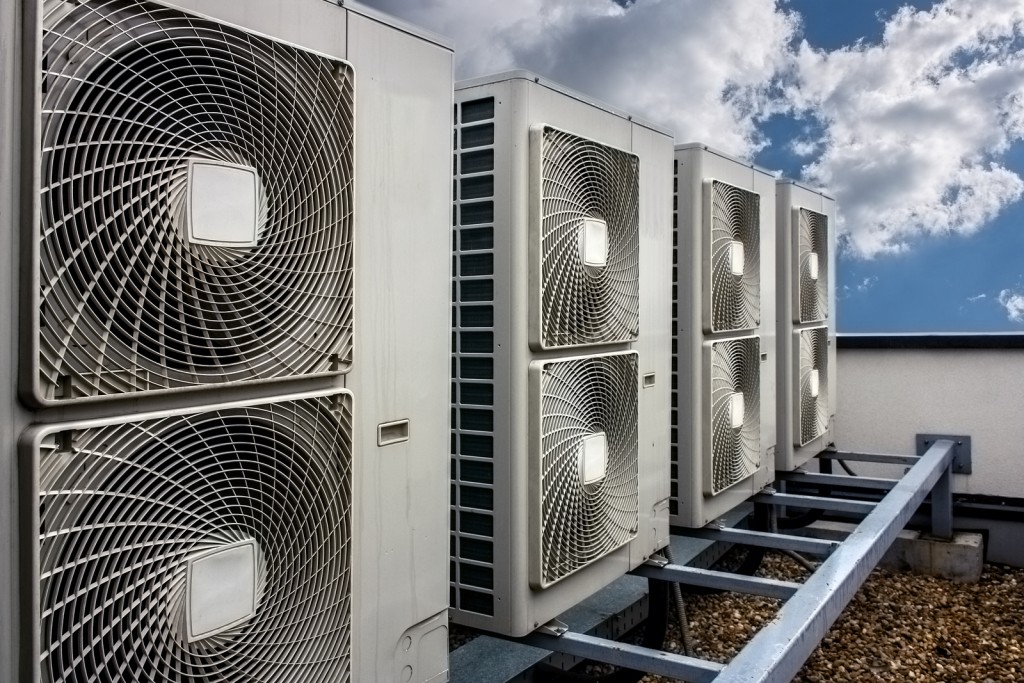
Air conditioning system assembled on side of a building.
HVAC is the acronym for Heating, Ventilation and Air Conditioning, it falls into two categories; local or ducted/split systems. The local heating is a ductless heating system that provides heat to a single room or area such as fireplaces, electric radiators, fans, and single room air conditioners like floor mounted air conditioning units, etc.
The latter one has the ability to distribute cold or hot air depending on your needs all over a building. They are ducted/split systems and they are named as such because they are implemented with the use of numerous ducts or pipes. An example of a ducted/split system air conditioning unit consists of different parts and mostly includes a chiller, boiler, furnace or heat pump allowing it to increase or decrease the air temperature on a centralized location before it gets distributed throughout the building using a network of pipes or ducts. There is a minor difference between a ducted and split air conditioning system, and it is the visibility. Basically, ducted systems aren’t the perfect fit for residential homes because the piping requires to be installed through the ceiling or floor. All you’ll see are vents that will pump cool or warm air into your rooms. The split/multisystem on the other hand is perfectly suitable for all kinds of buildings, but it requires an outdoor unit and a single or possibly multiple indoor units to regulate temperatures in a certain room of your home. In order to implement a split/multisystem two or more coils are used to draw air, one for each indoor unit and one for the outside unit.
The outdoor unit’s compressor compresses the low-pressure refrigerant gas to heat it up and then this hot air circulates through the condensing coils located outdoors and a fan dissipates the heat, cooling down the refrigerant and finally making it a high pressured liquid. It will travel to the indoor fan-coil which then passes through an expansion valve. The pressure continually drops until it becomes a gas which requires the heat of the indoor air while it travels through the coil. The cooled air is them distributed through the home.
Heat sources can be gathered from different sources in a building. Everything from human body temperature, windows, walls, roofs, appliances and more adds ambient heat to a room. Many things are taken into consideration when choosing the right HVAC system. Your HVAC designer should be an expert in the principles of thermodynamics, the properties of air, fluid mechanics, heat transfer, comfort conditions, various types of air conditioning systems and their workings.